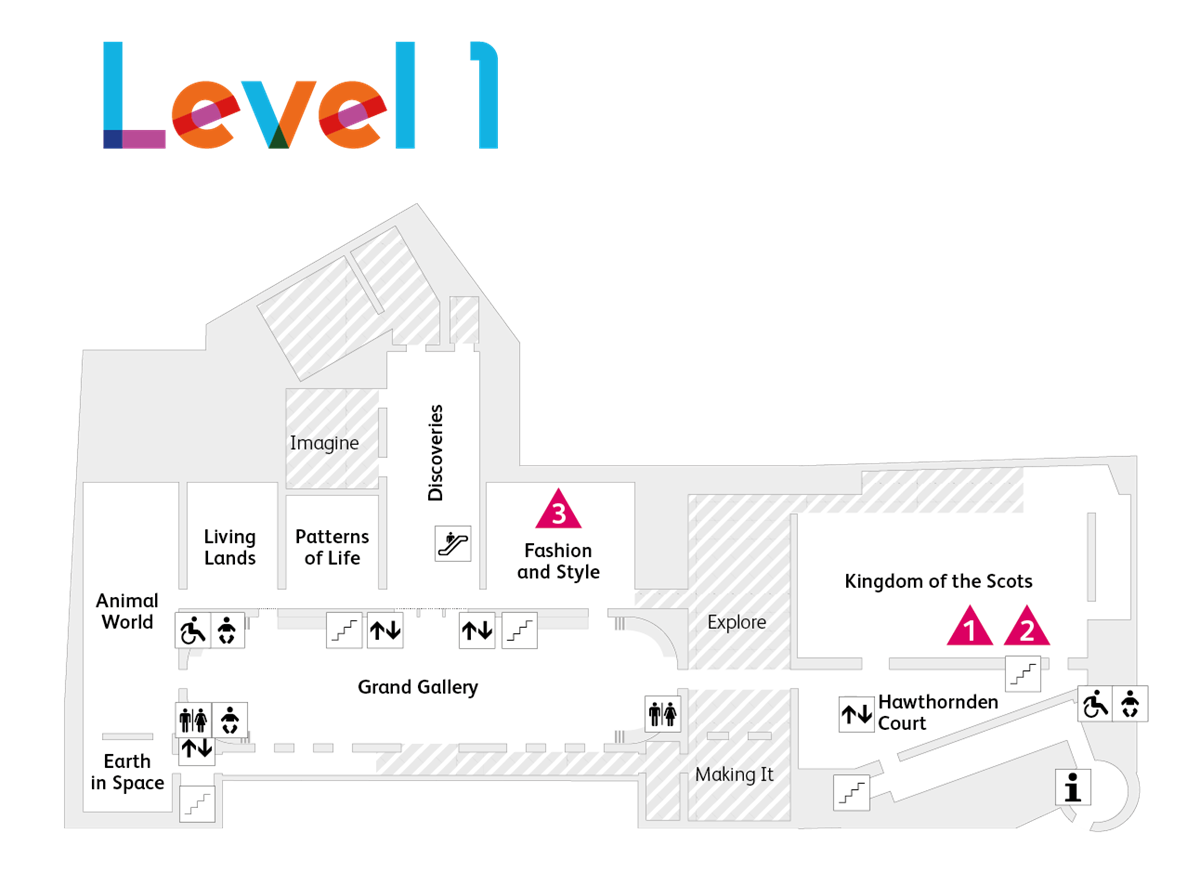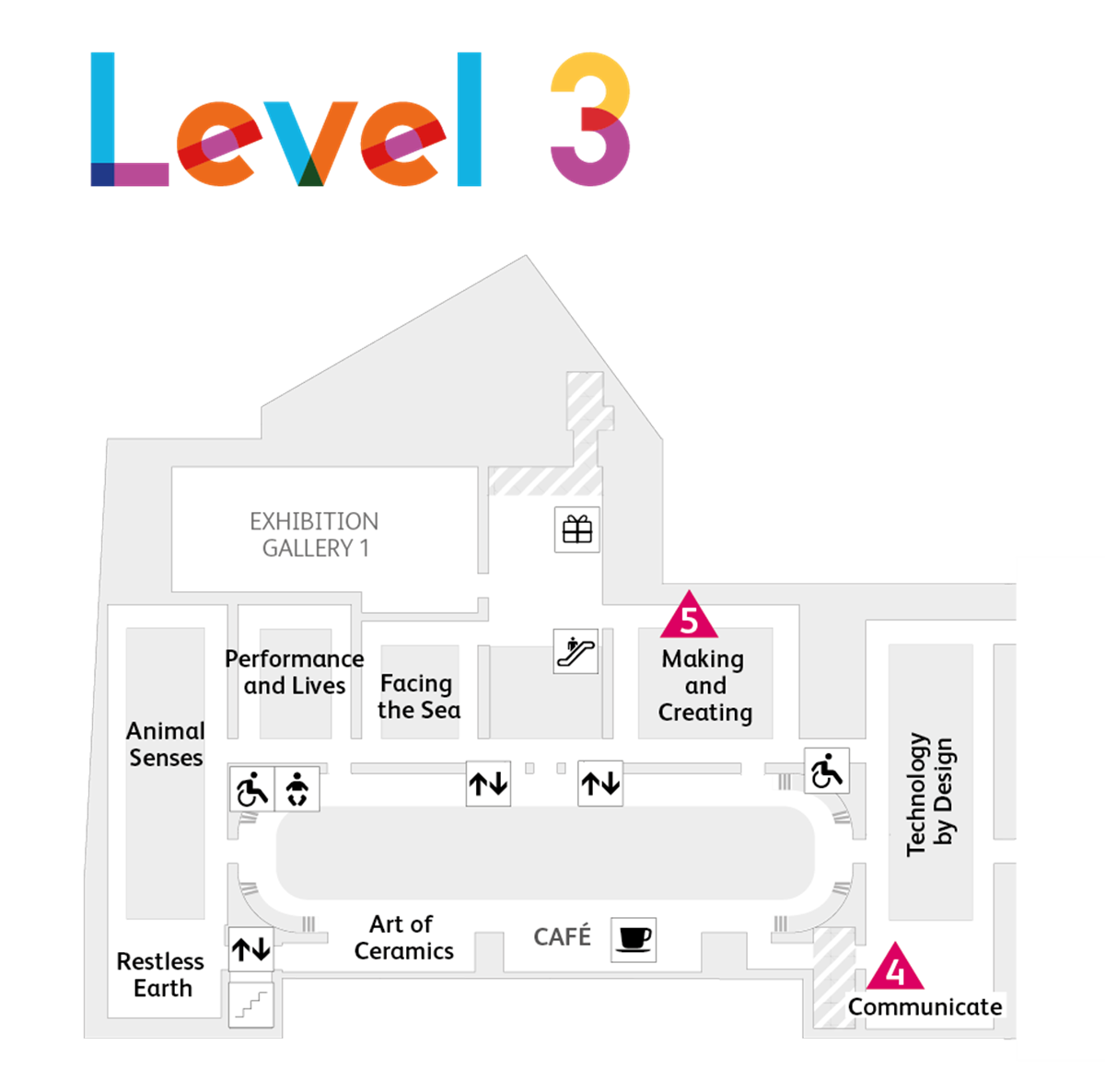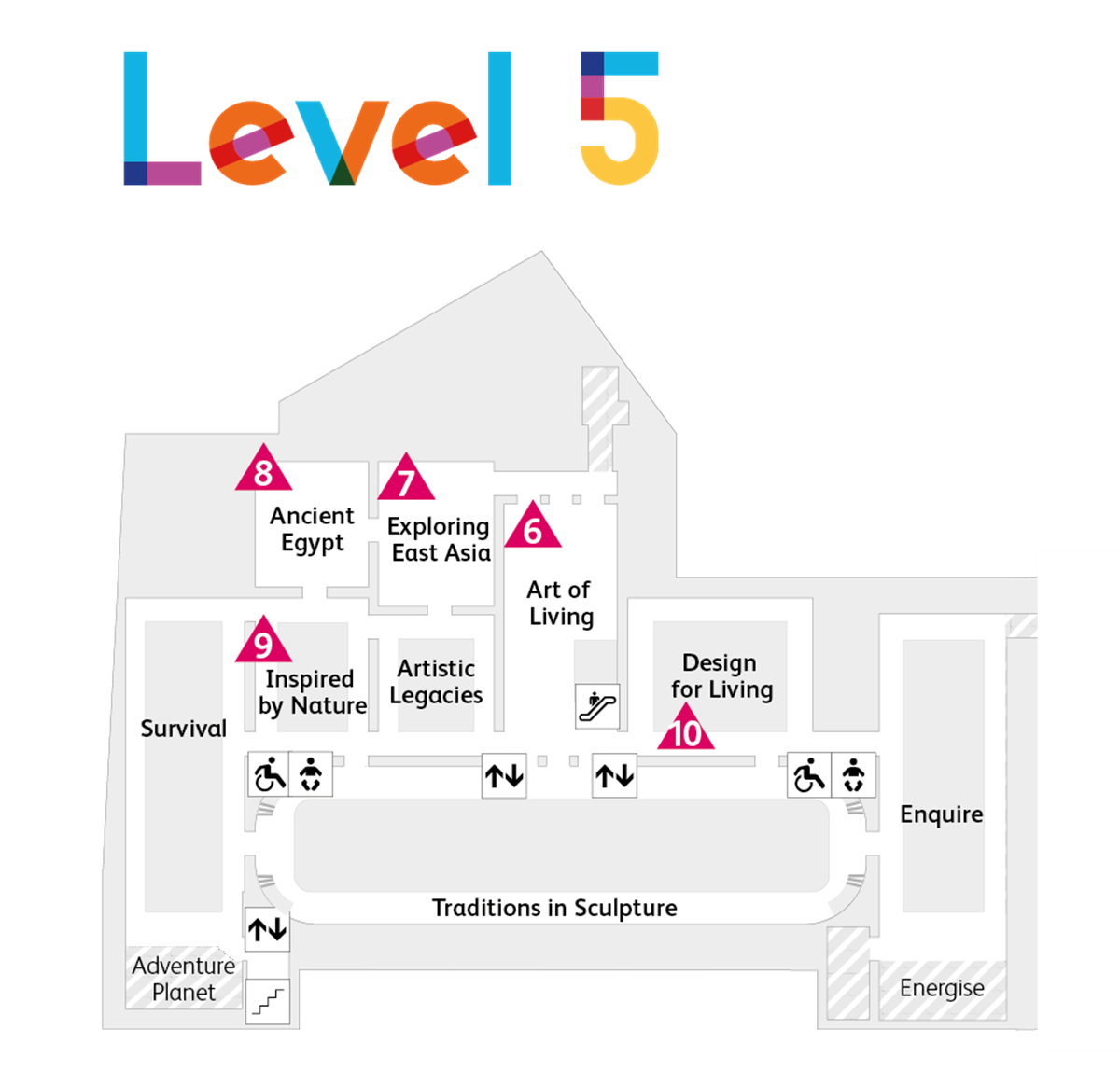Key in a search term below to search our website.
Key in a search term below to search our website.

This trail is a collaboration between young people from Impact Arts, LGBT Youth Scotland and our Scotland 365 youth engagement team with National Museums Scotland to highlight LGBTQIA+ stories across our collections.
LGBTQIA+ stories have often been kept out of mainstream history, so we are keen to make them visible. We are committed to collaborating with communities to make these histories better known and understood.
This trail features ten objects found on Levels 1, 3 and 5 at the National Museum of Scotland.
You can follow the trail in a number of ways:
Find this trail on:
Listen to audio recordings for each part of the trail below, made by Sanctuary Arts and supported by Media Education.
LGBTQIA+ Hidden Histories trail
This trail is a collaboration between young people from Impact Arts, LGBT Youth Scotland and our Scotland 365 youth engagement team and National Museums Scotland to highlight LGBTQIA+ stories across our collections.
LGBTQIA+ stories have often been kept out of mainstream history, so we are keen to make them visible. We are committed to collaborating with communities to make these histories better known and understood.

Level 1, Object 1, Stained and painted glass panel showing portrait of James VI and I, 1619, Kingdom of the Scots.
King James VI and I, son of Mary Queen of Scots was famous for having a succession of male ‘favourites’ throughout his reign, a term then sometimes used to mean a romantic partner or lover. The most well-known of these was George Villiers, the Duke of Buckingham, who was the king’s favourite from around 1608 until James’ death in 1625. These stained-glass windows, originally located in Wroxton Abbey in England, were made to commemorate a visit to the area by the King and his ‘favourite’. Nearby you will see a silver pocket watch from around 1615. This watch was a gift given to Robert Ker, the Earl of Somerset, by King James VI/I. Robert followed James from Scotland to England in 1603 and was well known to also have been another of the king’s ‘favourites’.
Level 1, Object 2, Iron collar or jougs, Fife, 17th century, Kingdom of the Scots.
Iron collars like these were used to punish women accused of witchcraft. The persecution of so called ‘witches’ became more common in Scotland during the early 16th to mid 18th centuries. Women living outside the bounds of normal society, for example being unmarried or cohabiting with another woman, were often regarded with suspicion, and sometimes accused of witchcraft.
One account from the 17th century reports the case of Maud Galt, who was accused of being a lesbian by her maid. This was later used as evidence to accuse her of being a witch, and the state decided to replace the charge of lesbianism with that of witchcraft. The fact that the two were so interconnected speaks volumes about how homosexuality was perceived at the time.
Level 1, Object 3, Alexander McQueen Boots, Leather and Mink, 2012, Fashion and Style.
These hoof like heel-less boots with horse shoes in the sole were worn down the Paris catwalk as part of the Alexander McQueen Autumn/Winter 2012/13 collection. Two years previously, Alexander McQueen had died by suicide shortly after the death of his mum. After his death his assistant Sarah Burton took on his previous role as Creative Director at Alexander McQueen.
The embellishments on these boots and their intricate details are typical of McQueen’s creative and daring designs. Alexander McQueen was openly gay and HIV positive and famously said in Vogue magazine “I went straight from my mother’s womb onto the gay parade”.

Level 3, Object 4, Enigma encoding machine, 1944, Communicate.
Decoding messages sent by German submarines from an Enigma machine made a huge contribution to the Allied Forces winning the second world war. Mathematics Cambridge graduate Alan Turing (1912– 1954) was central to this, working alongside others at Bletchley Park to build the Bombe, a machine which could decode Enigma messages. Turing earned an O.B.E for the Bombe, and was a prominent figure in computer science and the study of artificial intelligence. In 1952 Turing was accused of ‘gross indecency’ for being in a homosexual relationship, and forced to undergo chemical castration to avoid prison. In 1954, he died as a result of cyanide poisoning. Whether this was an accident or suicide is much debated. In 1967 ‘male homosexual acts’ were decriminalised, and Turing has been exonerated of his so-called ‘crime'. Turing received a posthumous royal pardon in 2013.
Level 3, Object 5, Ceramic dish, by Emmanuel Cooper, 1998, Making and Creating.
Emmanuel Cooper was born in 1938 and worked as a potter and writer. In the 1970s Cooper became involved in the gay rights movement and helped found the Gay Left Collective, a journal of left leaning activism. He built a supportive network of gay artists and remained an active gay rights campaigner throughout his life. This dish is a clear example of Cooper’s use of volcanic textures, an effect achieved through use of heavy glazing.

Level 5, Object 6, Statue of St Sebastian, painted oak, c. 1480–1490, Art of Living.
Saint Sebastian was born in 256 AD and was an early Christian martyr and saint. He was presumed dead after the Emperor Diocletian ordered him to be tied to a post and shot through with arrows, however, he survived the ordeal and was later killed by being beaten to death.
Saint Sebastian has often been portrayed by artists as a beautiful young man, in an idealised, erotic manner. Since the 19th century, he has been considered a gay icon and there have been many homoerotic representations of him by artists.
Level 5, Object 7, Painted scroll, c.1700, Exploring East Asia.
Painted by Furuyama Moromasa, the journey through the theatre district of Edo (now Tokyo) in this 13-meter scroll includes depictions of same-sex attraction and gender diversity. Wakashu – attractive male youths who adopted female clothing and speech and were considered a third gender – can be hard to spot, but onnagata – male Kabuki actors who specialized in women’s roles and often continued these personas offstage – can be identified by the purple cap used to cover their shaved patch of hair.
Level 5, Object 8, Silver coins depicting Alexander the Great, c.325–285 BC, Ancient Egypt Rediscovered.
These coins depict Alexander the Great, the ancient Greek ruler who built a huge empire. Alexander received his title due to his many military victories over two decades. He was undefeated in battle but died at the age of 32.
Ancient Greeks largely accepted that it was possible to be physically attracted to persons of either sex, however, their understanding of sexual relationships is not easily described in modern terms.
Alexander’s sexuality was not remarked upon by writers of the time, as certain same-sex relationships were expected of aristocratic and powerful men. Alexander has become a modern gay icon, with books, films and art portraying his potential relationships.
Level 5, Object 9, Amphora showing Herakles and the Amazons, c.550–500 BC, Inspired by Nature.
This two-handled pot, known as an amphora, was probably used to serve wine. It shows the Greek hero Herakles (called Hercules by the Romans) and the Amazons on one side, and two archers on the other. Popular stories about Herakles tell of his having sexual relationships with both men and women. The mythical Amazons were a closed society of female warriors and hunters, who today have become lesbian icons.
Level 5, Object 10, Embroidery, by May Morris c.1900, Design for Living.
May Morris (1862–1938) was an embroidery designer, teacher, jewellery and wallpaper designer, editor and socialist. Her father was William Morris the Arts and Crafts designer, poet, socialist and novelist. May inherited the Morris family home, Kelmscott Manor, in rural Southern England. In 1917 she invited her gardener Mary Lobb to move in with her where they lived together for the next 22 years enjoying their shared passions for nature, travel and wildlife. When May died she left the bulk of her estate and most of her personal items to Mary.
We hope you have enjoyed our trail. This is only the beginning of our work exploring LGBTQIA+ histories in our collections, with more to come over time.
During 2019–2020, participants with the Impact Arts Creative Pathways +18 employability programme worked alongside National Museums Scotland to create this trail and audio guide. The young people selected objects, researched stories and developed the trail content, supported by NMS.
With thanks to Impact Arts participants Dylan, Ivy, Hannah, and Stuart. Additional thanks to Gareth and Laura from National Museums Scotland, and to the LGBT Youth Scotland Consultation Group (Finn, Tom, Ivy, Zoel, Wren and Simon) and members of our Scotland 365 Youth Engagement Team.
LGBTQIA+ is a term used to show the different ways people define their gender and sexuality, including lesbian, gay, bisexual, transgender, queer, intersex and asexual. Language and definitions are constantly evolving, but this is the term agreed by the young people as the most inclusive.

Laura Bennison, our Community Engagement Officer, explores how our LGBTQIA+ Hidden Histories Trail came to be and how it was developed.
Read blogWe hope you have enjoyed our trail. This is only the beginning of our work exploring LGBTQIA+ histories in our collections, with more to come over time.
During 2019–2020, participants with the Impact Arts Creative Pathways +18 employability programme worked alongside National Museums Scotland to create this trail and audio guide. The young people selected objects, researched stories and developed the trail content, supported by NMS.
With thanks to Impact Arts participants Dylan, Ivy, Hannah, and Stuart. Additional thanks to Gareth and Laura from National Museums Scotland, and to the LGBT Youth Scotland Consultation Group (Finn, Tom, Ivy, Zoel, Wren and Simon) and members of our Scotland 365 Youth Engagement Team.
Audio transcript recording by Lauren Jane Ross, supported by Media Education, with thanks to Sanctuary Queer Arts.
LGBTQIA+ is a term used to show the different ways people define their gender and sexuality, including lesbian, gay, bisexual, transgender, queer, intersex and asexual. Language and definitions are constantly evolving, but this is the term agreed by the young people as the most inclusive.
